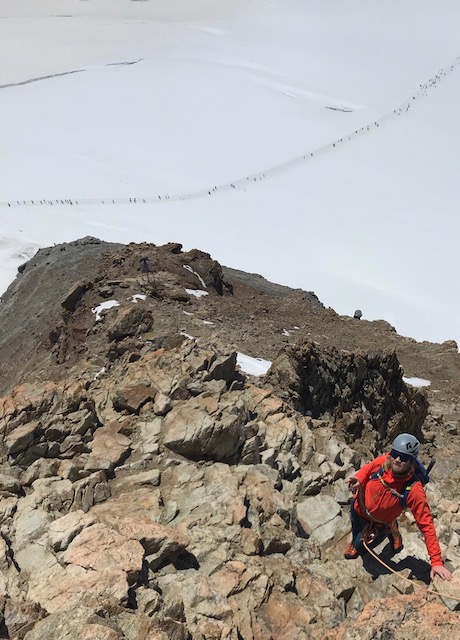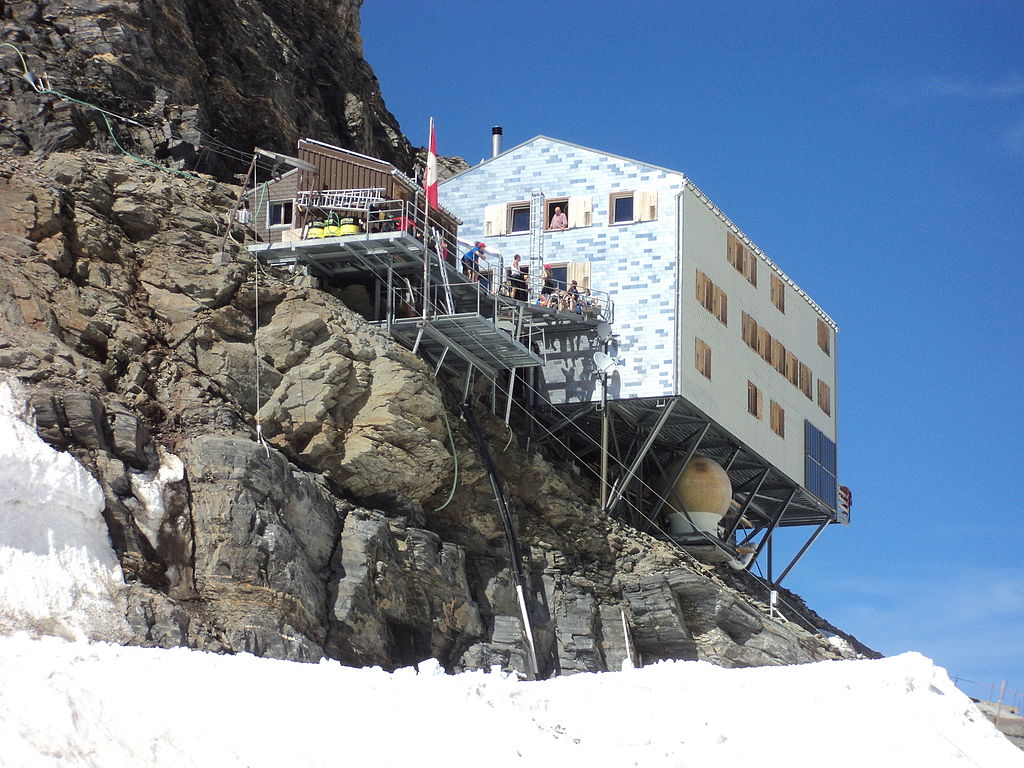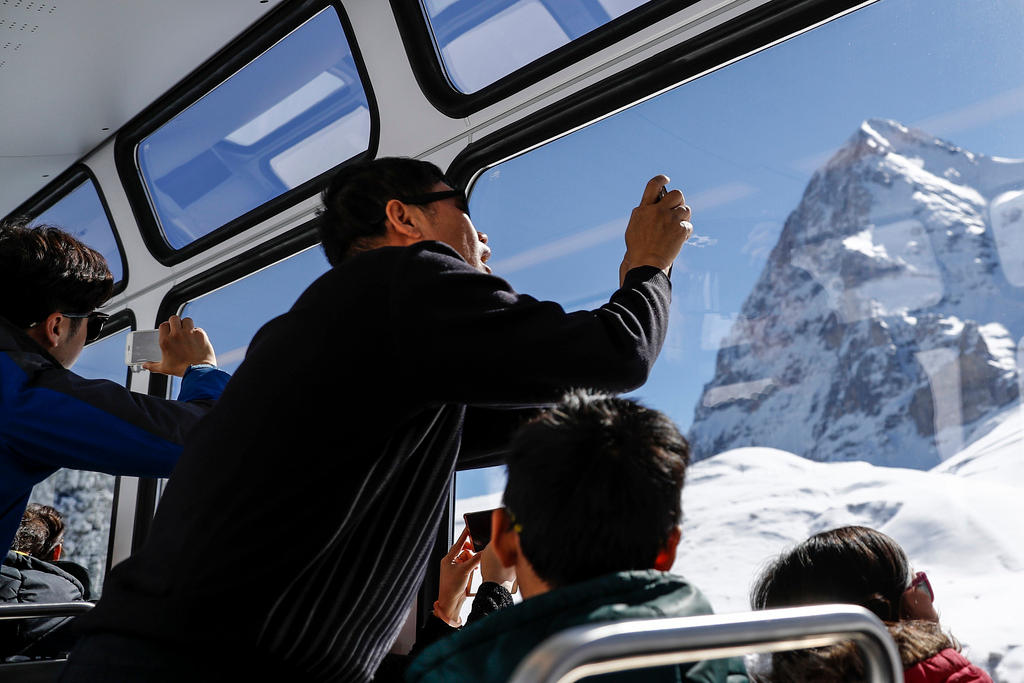Climber finds Jungfrau ‘Corona Pass’ deal infectious
I've just climbed the Mönch, a 4000m (13,000ft) peak in the Swiss Alps, with two close friends. They are now one step closer to realising their dream of reaching the summits of the famous Bernese Oberland trio: Eiger, Mönch and Jungfrau, and we are descending happily, under blue skies, back towards the plateau at the top of the Jungfraufirn: a tributary of the Great Aletsch glacier.
It should be a wilderness up here, but this alpine landscape has not been a wilderness since 1912, when the highest mountain railway project in the Alps was completed. It shouldn’t come as much surprise then, that the glacier is a hive of activity. Yet still, as the three of us glance down from time to time, there is disbelief.
A black, unbroken line, like a row of ants, now stretches out across the glacier from the Jungfraujoch to the Mönchsjoch hut. The people are walking along a groomed track, made by the same machines that usually service ski slopes in winter. The crevasses have all been filled in and a level, engineered footpath has been made – an “official safe zone”. Assuming people stick to it.

In the morning we found that not all people do. Deep footsteps from the afternoon before had not yet been ploughed over and instead had frozen solid overnight: This made the track hard going, but to set a good example, and being in no rush, I stuck to it. Then tourists began to overtake, walking five or 10 metres out across the bare glacier surface.
From my experience I knew the risks were relatively low; the snow lay thick over the glacier at present; snow bridges are strongest at this time of day. But the only thought in these people’s minds was it was easier to walk on. In their trainers. Indeed – that was one person’s answer to my friendly warning. Despite having no knowledge of glacier rescue techniques; no ice axe, ropes or other tools to perform them, these people seemed to know best.
This is still a glacier wilderness, beneath the thin veneer of man’s control. These first faint tracks outside the path encourage the next group of tourists, and the next. Until now, as we look down just after midday, to see some still walking outside the path – above crevasses large enough to lose your house in; presumably to dodge the mass of people going the opposite way. But why are there so many people?
The answer lies with the railway company. In the absence of foreign tourists due to Covid-19, they decided to make a deal for Swiss residents – and they named it the “Corona Pass”. I myself laughed, then promptly went out and bought one. As a local alpinist it was rare opportunity. A normal season ticket here has never included the journey to the Jungfraujoch station billed as “Top of Europe” (and probably never will again). For this you had to pay extra.
It seems many others, some who don’t normally get to travel so high in the mountains, also jumped at the offer – and I can’t say I blame them. In the absence of vast numbers of overseas tourists, mostly from Asia and the Gulf States, it seemed the prime opportunity to visit in relative peace (there’s an element of prejudice here, I admit). Unfortunately like any great gold rush, the more people involved, the less value there ends up being. And the dream trip, for many, turns out to be quite a stressful affair.
Add into the mix the rules now in place to slow the transmission of Covid-19 and you get some interesting extremes of behaviour. On all public transport in Switzerland the wearing of masks is now mandatory, but not in other indoor spaces. On the first train up in the morning I slid mine off to eat a banana, much to the displeasure of a woman beside me. But once the train arrived at the top, half of the passengers tore theirs off only to enter a series of confined, worm-like tunnels.
The train was crowded, and so too was the march through the tunnels, now sans masks for many, as a herd mentality set in – a good idea as going against the crowd was all but impossible. Some people, aware of the infection risk, tried to keep a space around them, but others were nonchalant about body contact.
The reward at the end of the tunnel is a once-in-a-lifetime opportunity for many to stand on a glacier, surrounded by icy peaks so close you think you can reach out and touch them. In a normal year, most tourists are content to stay close to the tunnel, soak up the views and throw snowballs.
But the majority of visitors this summer are locals, and no self-respecting Swiss would pass up the opportunity to hike, especially if it’s a chance to walk across a glacier, with a prize at the end; lunch at the hut just below the peak we had just climbed. They had formed the never-ending row of ants we were watching from above and were now about to re-join since our lodging for the night was the very hut they were headed for.

We arrived to find people crammed into each available space; laughing and coughing, mask free, their rucksacks on the floor ready to trip you up. With all thoughts of coronavirus having been forgotten the inside of the hut was more hazardous than climbing a mountain or crossing a glacier.
When the midday rush was nearly over, the strain was still clearly visible on the faces of the staff. Yet a young server still managed a polite “No” when asked whether they had “pizza or fries”, as if this were a fast food restaurant, not a high-altitude lodging where have to melt snow to make water.
In the early evening with the crowds finally gone, the hut was again the cosy and calm place I have always known. A mountain hut like any other.
The next day we summited the Jungfrau. My two friends realised their dream. Our climbing complete, we headed back through the tunnel to catch the train only to fight against the current of new Corona Pass holders. Jostling. Masks on, masks off.

In compliance with the JTI standards
More: SWI swissinfo.ch certified by the Journalism Trust Initiative


You can find an overview of ongoing debates with our journalists here. Please join us!
If you want to start a conversation about a topic raised in this article or want to report factual errors, email us at english@swissinfo.ch.